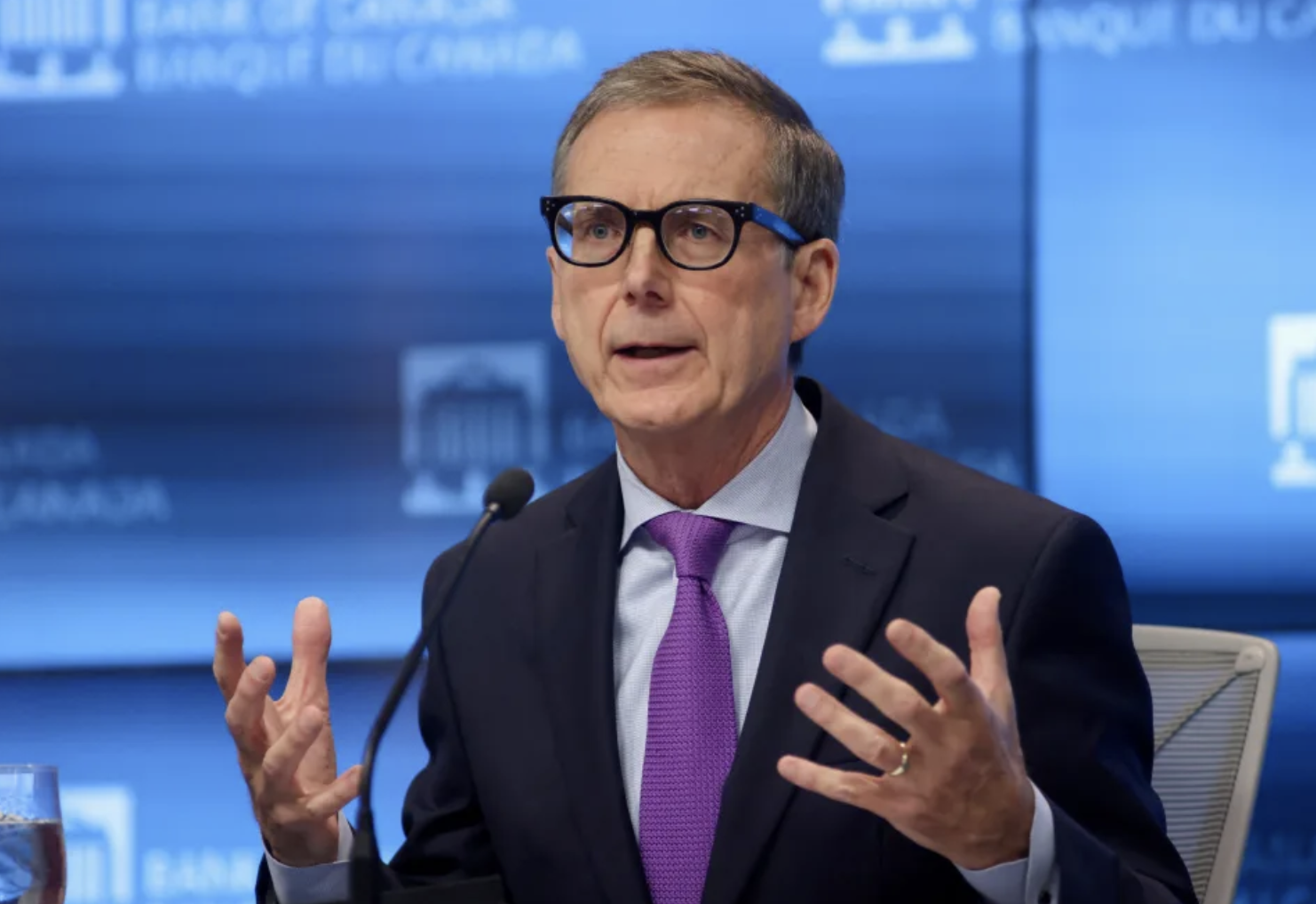Your Trusted Real Estate Advisors. Let Us Help You!
Bank Of Canada Delivers Third Straight Rate Cut, Bringing Policy Rate Down To 4.25 Per Cent

Bank Of Canada Delivers Third Straight Rate Cut, Bringing Policy Rate Down To 4.25 Per Cent
The Bank of Canada cut its benchmark interest rate for the third consecutive time on Wednesday, leaving the door open to further cuts while warning that the Bank needs to guard against the risk that inflation falls below two per cent.
Wednesday’s 25 basis point cut, which brings the Bank’s policy rate to 4.25 per cent, was widely expected by economists. Analysts expect more cuts to come this year, with financial markets betting that there is a 93 per cent chance of a 25 basis point cut in October, according to Reuters, while another rate cut in December is fully priced in.
Some economists also say that weaker-than-expected growth could mean a larger 50 basis point cut is on the table. While Bank of Canada Governor Tiff Macklem said the Bank’s governing council had discussed the potential scenario of a 50 basis point cut, it opted for a 25 basis point cut, citing continued easing of broad inflationary pressures. Macklem reiterated that if inflation continues to ease broadly in line with the Bank’s previously released forecasts, “it is reasonable to expect further cuts in our policy rate.”
The governor also highlighted for the second decision in a row the “push and pull of opposing forces” on inflation. Overall weakness in the economy is pulling inflation down, while high prices for shelter and some services are holding inflation up.
“As outlined in our July forecast, inflation is expected to ease further in the months ahead. It may bump up later in the year as base-year effects unwind, and there is a risk that the upward forces on inflation could be stronger than expected,” Macklem said.
“At the same time, with inflation getting closer to the target, we need to increasingly guard against the risk that the economy is too weak and inflation falls too much.”
While the central bank cited progress on inflation, which fell to 2.5 per cent in July, it also flagged downside risks to the economy. The Canadian economy grew faster than expected in the second quarter, although that was largely due to government spending and business investment. The Bank had expected growth to strengthen in the second half of the year, and it noted that “recent indicators suggest there is some downside risk to this pickup.” Preliminary data suggest economic activity was soft in June and July, and employment growth has stalled in recent months.
“As inflation gets closer to target, we want to see economic growth pick up to absorb the slack in the economy so inflation returns sustainably to the 2 per cent target,” Macklem said.
“We care as much about inflation being below the target as we do above. The economy functions well when inflation is around 2 per cent.”
50bp cut may be needed if economy continues to slow
Desjardins managing director and head of macro strategy Royce Mendes said in a research note on Wednesday that with the economy already operating in slack, a rebound is necessary to keep inflation from falling below two per cent.
“That said, even after three rate cuts, we don’t believe the central bank has done enough to see such a rebound,” Mendes wrote, noting that the housing market has “barely” responded to lower rates amid affordability challenges.
“To unlock the savings that households have built up, we think the Bank of Canada will need to continue cutting interest rates at each of its decision dates until at least the middle of next year. With growth faltering instead of picking up as officials had forecast back in July, the risk is that central bankers will need to slash rates in October by 50 basis points instead of 25 basis points to spur a recovery.”
Some economists are still pricing in 25 basis point cuts.
“While markets had put small odds on a 50 basis point move, the Bank still cited two-sided risks to inflation, while noting that June/July data suggest downside risks to their growth outlook,” CIBC Capital Markets economist Avery Shenfeld wrote in a research note.
“For now, we’re calling for two more 25 basis point moves this year, enroute to a roughly 2.5 per cent overnight rate next year, but a disappointment in upcoming jobs data could still compel a bolder pace of easing, as could the need for a significant forecast downgrade in the October (Monetary Policy Report.)”
Still, Macklem said that a soft landing is not off the table for the central bank.
“We’re certainly a lot closer to the landing than we were. Inflation is much closer to the target than we were a year ago, and the economy, while it has certainly slowed, it hasn’t weakened sharply,” Macklem said.
“But we haven’t landed the economy yet. The runway is in sight, but we have not landed it yet.”